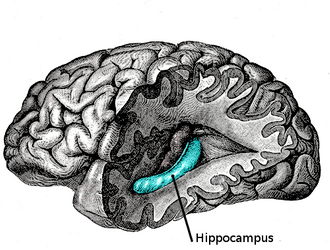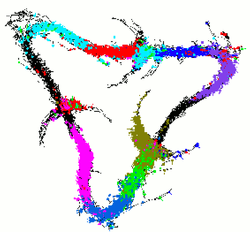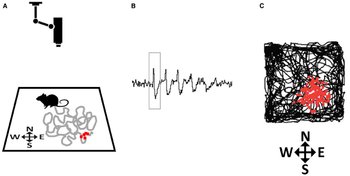Hippocampus & Place Cells. Did you know???
Hippocampus & Place Cells. Did you know???

Hippocampus is one of the complex structures in the brain. As an extensively studied brain structure, the hippocampus involves in a variety of phenotypically varied morphologically separated disorders such as learning, memory, schizophrenia, and Alzheimer’s disease (Braak & Braak, 1991; Honea, Crow, Passingham, & Mackay, 2005; McCormick & Contreras, 2001). With the discovery of place cells, the role of hippocampus has further found to be associated with spatial awareness and memory modulation as well (O’Keefe & Burgess, 1996).
The beginning of hippocampal research comes from an epileptic patient known as “patient H.M.” (in 1953) when Scoville (the neurosurgeon) decided to remove a part of the brain to cure his epileptic seizures. Following the surgery, the patient was unable to form novel declarative memories: but, was able produce procedural learning tasks even without having a recollection of the learning procedure. Decades later, a detailed analysis of the neurophysiological studies revealed two separate areas that are located for declarative memory and remembering learning procedures (Annese et al., 2014).
Quite Interesting, isn’t it?

The discovery of place cells (by O’Keefe and Nadel) was in fact based on cognitive dysfunctions that followed hippocampal damage. Simply, place cells are specific neurons in the hippocampus that fire when an organism enters a place field. According to O’Keefe’s research, hippocampus contain a neuro-cognitive map of the peri-personal space that complements the cognitive map theory suggested by Tolman (1948). Because the initial studies were based on stimulus response activities, and the lack of physiological proof of the spatial neurons, made the identification of place cells in the hippocampus more significant in forming the neuro-cognitive map.

The studies of place cells were conducted by electrodes inserted into the brain. So most of the first studies were done in rodents (rats). O’Keefe further found, regardless the environmental cues, place cells remained a fixed firing pattern showing a location specific neural activity. Subsequent studies have found further neural activities according to specific behaviors performed. For instance, Head direction cells, based on the direction of head movement (Taube et al, 1990), Grid cells, the cognitive map that divides the spatial environment into evenly-spaced equilateral triangles (hafting et al, 2005), and Boundary cells, the neurons that fire at a particular boundary. The hippocampal spatial mapping was done by using grid cells (self-emotion cues), and boundary cells (external environmental cues). Subsequent studies have found various other types of place cells, which requires a separate blog for me to explain every possible cell.
So the identification place cells is very interesting as well as important for us to further understand the functionality of hippocampus.
What are the other types of hippocampal functions that you know? Leave it down in the comments section.
If you like to know more about our brain and its functionality please consider up voting.
This is my original work (!originalworks). The pictures are from google (available for free use).
Thank you steemians. Until next time .......
That is so amazing. I am very grateful for that! Love it.
@minnowpond1 has voted on behalf of @minnowpond. If you would like to recieve upvotes from minnowpond on all your posts, simply FOLLOW @minnowpond. To be Resteemed to 4k+ followers and upvoted heavier send 0.25SBD to @minnowpond with your posts url as the memo
@cryptohustlin has voted on behalf of @minnowpond. If you would like to recieve upvotes from minnowpond on all your posts, simply FOLLOW @minnowpond. To be Resteemed to 4k+ followers and upvoted heavier send 0.25SBD to @minnowpond with your posts url as the memo